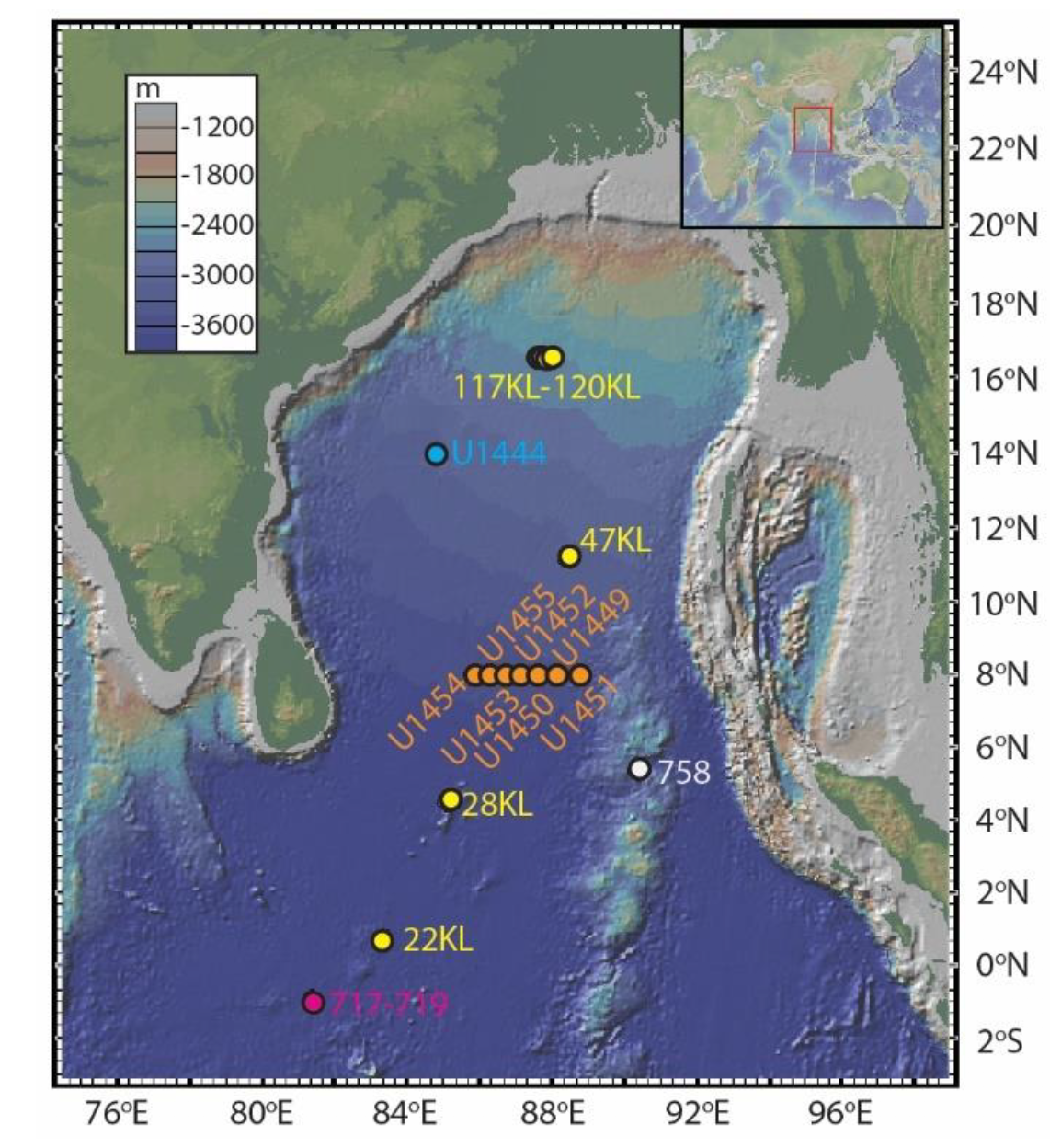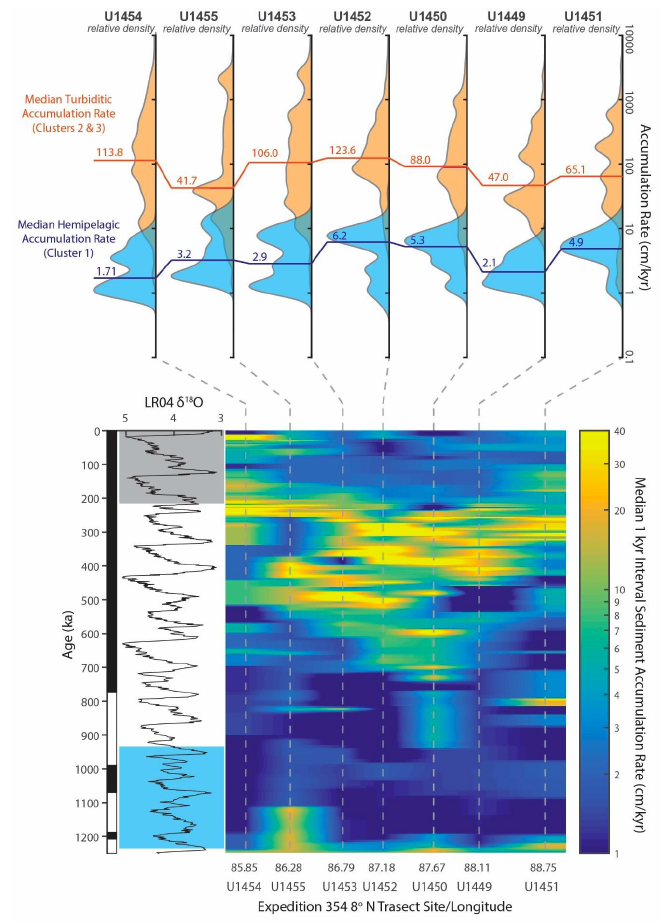Dr. Brendan Reilly and team have generated a chronology and age uncertainty for the middle to upper Pleistocene from the Bengal Fan record, using a novel age-depth modeling approach from the International Ocean Drilling Program (IODP) Exp 354. Although IODP Exp. 352 consists of a series of seven drill site that date back to the Paleogene, this study focused on sediment deposits over the last 1.25 million years(lower Bengal Fan’s middle to upper Pleistocene depositional history),to determine the behavior of the fan during changes in sea level, climate and tectonic activity.

The Bengal Fan is a deep-sea depositional fan, located in the sea of Bengal, created by the Himalayan’s erosional system. Meaning this fan contains the most complete record composed of eroded sediments from the Himalaya used to study the regional climate and tectonic history. Understanding the history of this system can help clarify some of the mysteries behind the Cenozoic uplift of the Himalayan Mountain range, development of the Asian Monsoonal systems, carbon sequestration by increased silicate weathering, and burial of organic carbon. Dr. Reilly’s new age-model for the evolution of the Bengal Fan is the first step to uncover these mysteries. Preliminary data already suggests the primary driver of changes in the Bengal Fan is from sea-level change from melting ice sheets. This is shown through the rapid growth of the fan during times when sea level increased due to erosional and depositional effects from melting ice sheets and glaciers.

If you are interested in this paper, it can be found here Congratulations Brendan! We look forward to your continued work!
